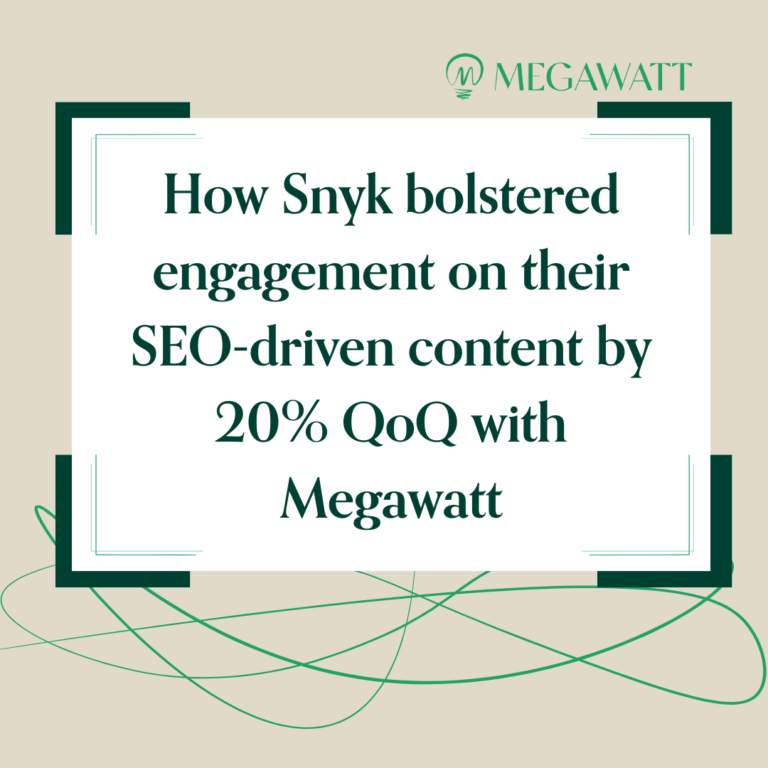Lights, Camera, Conversion: the Keys to a B2B Video Marketing Strategy
Video is king when it comes to marketing, and your business needs a video marketing strategy to truly make it in the modern business environment. Sound extreme? We’re willing to bet on it.
Marketers, particularly B2B marketers, tend to invest in blogs, white papers, surveys, and other written content when devising and executing their marketing strategy — relegating video as a “nice to have” or “luxury” afterthought. The truth is, video should be one of the primary pillars of your content plan, because, well, people just like watching moving images.
Case and point: In the latest SEMRush State of Content Marketing Report, 45% of surveyed marketers reported video as their best-performing content. The same report mentions that articles with at least one video received a whopping 70% more traffic than articles without videos.
Most stats around video marketing point to the same conclusion: Video captures people’s attention and, thus, is a must-have tool in your marketing toolkit.

The Business Case for Video Marketing
Investing in video pays dividends. The content can add significant value to your business; five of the biggest benefits are:
- Increased brand awareness
- Enhanced SEO
- Better audience engagement
- Improved conversion rates
- Increased trust and credibility
Increased Brand Awareness
Video content engages viewers like no other form, making video marketing an effective way to increase brand awareness and visibility. Incorporating your brand message into your video content enables you to forge connections with your target customers. Plus, videos are easily distributed and shared across multiple channels (social media, email, online platforms), so you can capture a wider audience. According to Wyzowl’s Video Marketing Statistics 2023, 95% of surveyed marketers say video marketing has helped them increase brand awareness.
Enhanced SEO
Google and other search engines understand users enjoy video, which is why they prioritize websites with video content. By adding video to your website and optimizing video content with relevant keywords and descriptions, you can enhance your SEO rankings to drive more web traffic. Plus, when people share your video or link to it on their own site, you can enhance your search engine ranking even further through backlinks.
Better Audience Engagement
Video marketing is good at capturing eyeballs and getting messages across. In fact, viewers retain 95% of a message after watching it in a video, versus only 10% when reading it in text. That’s a huge difference.
Additionally, videos are versatile. They can be used in so many different ways. Businesses can (and should) leverage videos for product demos, explainers, customer success stories, and educational/informational campaigns.
Improved Conversion Rates
Explaining and demonstrating your product or service can make it easier to understand how it works and reduce purchase hesitancy, improving conversion rates. Plus, videos can add a layer of excitement and urgency so prospects are motivated to act. Don’t believe us? According to HubSpot, relevant embedded video content increases conversions by 86%.
Increased Trust and Credibility
The power of video boils down to the old adage — “You have to see it to believe it.” Demonstrating your product or service via video allows prospects to see it in action, increasing trust and credibility around your offerings and your brand. According to Hubspot’s 2023 State of Video Marketing report, 96% of people report watching explainer videos to learn more about a product, with 89% being swayed to make a purchase.
Sign up for Dear Wattson, our weekly newsletter, where all content conundrums are answered!
The keys to a successful video marketing strategy
So you’re convinced that you need to start leveraging video content to remain competitive. That’s great! But you can’t just start producing videos all willy-nilly and expect them to accomplish your business goals. You have to think strategically and devise a methodical approach toward video marketing. Here are the components of a video marketing strategy that gets results.
- Define your goals
- Identify your target audience
- Choose your video types
- Consistently create compelling video content
- Optimize your videos for SEO
- Distribute your videos widely
- Track metrics and analyze performance
- Rinse & repeat!
Define Your Goals
First things first, you must define your goals. The marketing team, and other stakeholders if necessary, need to discuss what goals they seek to achieve by adding video to the content mix. Whether it’s increased brand awareness, more organic website traffic, enhanced brand loyalty, and/or a boost in conversion rates, define your goals so you can set a path toward achieving them. Additionally, make sure you identify the right KPIs to measure on the path toward achieving those goals.
Identify Your Target Audience
Your video content isn’t meant for everyone, so who exactly is it meant for? Your audience will likely include your prospects, but could also include current customers, current and potential employees, or even investors. Conduct market research and gather feedback to understand who you’d like to reach (their demographics, preferences, interest, and behaviors). Doing so enables you to create videos that will resonate with them.
Choose Your Video Types
There are so many different types of video marketing content to offer — customer success stories, webinars, product explainers, short and long-form videos, animated and live-action. Choose the type of videos that your defined audience would take time out of their day to watch.
Consistently Create Compelling Video Content
(Enjoy that alliteration?) There are multiple avenues you can use to create compelling video content for your audience. You can do it in-house with a production team, hire freelancers, outsource to a marketing agency, contract a production company, or some combination thereof.
The key is to produce content on a consistent basis. The good news is that you don’t need to make content creation an over-the-top, ultra-polished endeavor. In fact, videos that are natural and feel a little homespun (featuring, for example, a subject matter expert or client) often excel at achieving the intended impact because they feel less like “marketing” and more like plain old helpful content.
Optimize Your Videos for SEO
Now that you’ve created your videos, optimize them for SEO so Google and other search engines can find and deliver them to your target audiences. This means adding relevant keywords to the video titles, descriptions, and tags, as well as captions for speakers or voice-over narration so search engines can find the content. (An added bonus of captioning audio is that it increases accessibility and allows viewers to consume content even with the volume off.)
Doing all of the above will also boost your SEO, even for videos posted to YouTube or Vimeo. However, those platforms will ultimately experience the web traffic, rather than your own website. Of course, web surfers can find your website after watching the videos on YouTube or Vimeo. Still, you must simply decide whether it makes sense to host on those platforms, or on one of your own web pages.
Distribute Your Videos
Time and time again, we notice that marketers create great content, but have no plan for actually distributing it other than posting it to their website and leaving it there. Create a plan for distributing your videos. Some avenues include:
- posting to your organization’s social media channels,
- including videos in your email campaigns,
- sharing with the sales team to use in outreach and meetings,
- and even using the videos in paid advertising to reach as many eyeballs as possible.
Track Metrics and Analytics
Measuring results is the only way to truly know whether your video marketing efforts are paying off. To that end, track relevant metrics and analytics as they relate to video performance. These can include:
- views,
- engagement,
- watch time,
- and conversion rates.
By tracking these metrics you can see which videos are working and which are not. For example, metrics and analysis might tell you that your product explainer videos lead to more conversions than, say, customer success videos. Thus, it would make more sense to create more of the former and less of the latter. Use data to understand whether your videos are having the desired effect, and let it inform your next steps.
***
You might also like:
3 Categories of Content for Your Marketing Funnel
***
Megawatt Can Help You Execute Your Video Marketing Strategy
At Megawatt, we understand that video can have an outsized impact on marketing efforts, which is why we work with B2B tech clients to create video content and will often pitch videos when developing content plans. Our content writers are experienced in coming up with video ideas and creating scripts that clients can take to their in-house video teams. Or we can partner with professional filmmakers (freelancers or production companies) to achieve your visions for video and project managing the process to save you time and resources.
Interested in chatting about incorporating video into your marketing strategy?
Contact us today.






